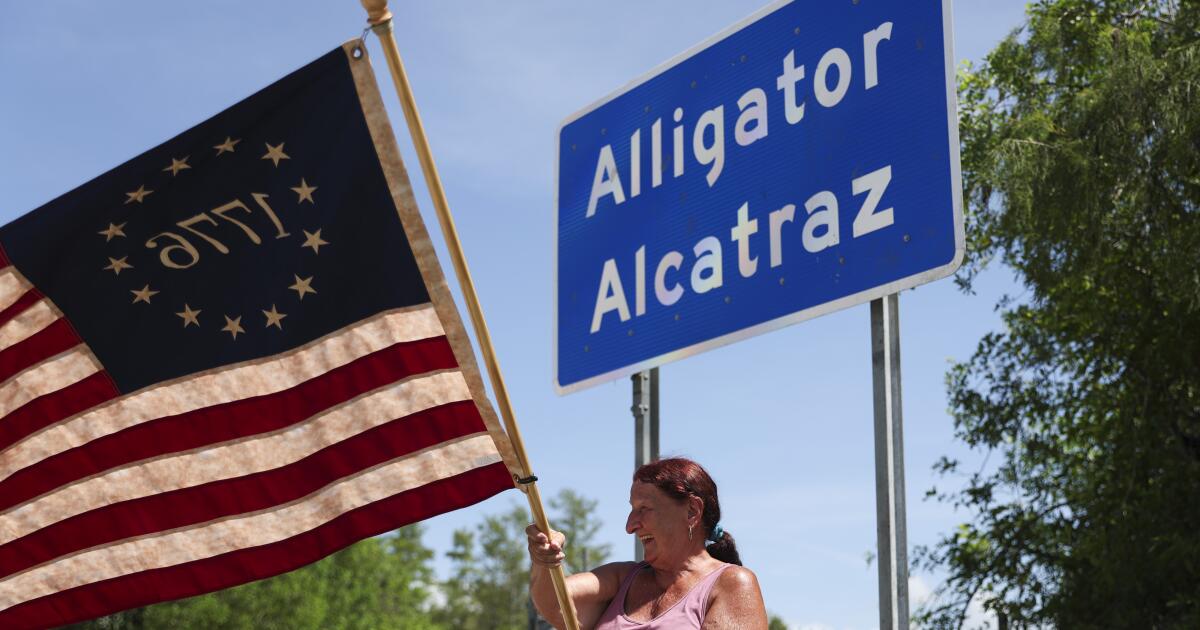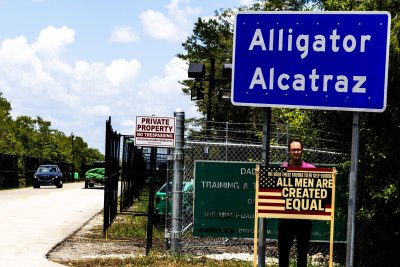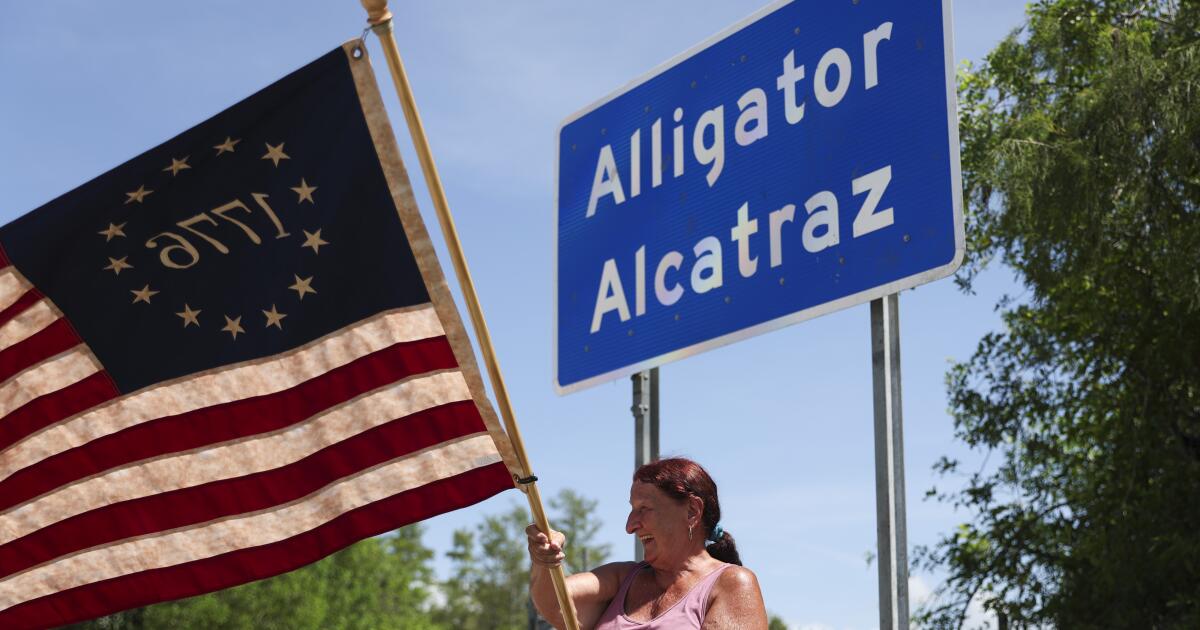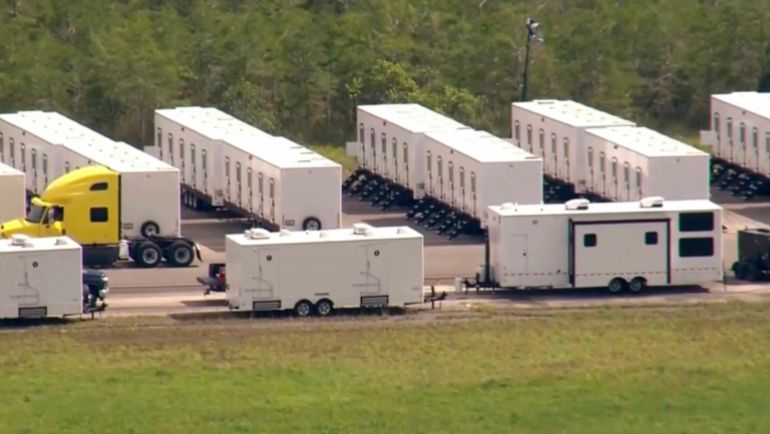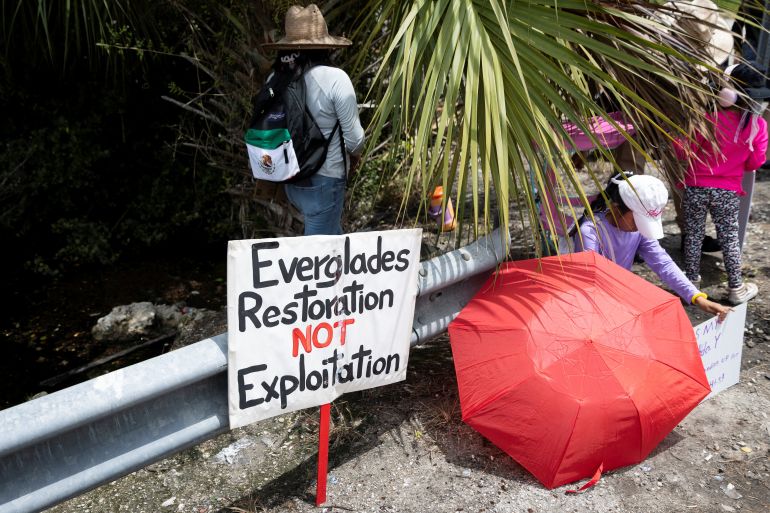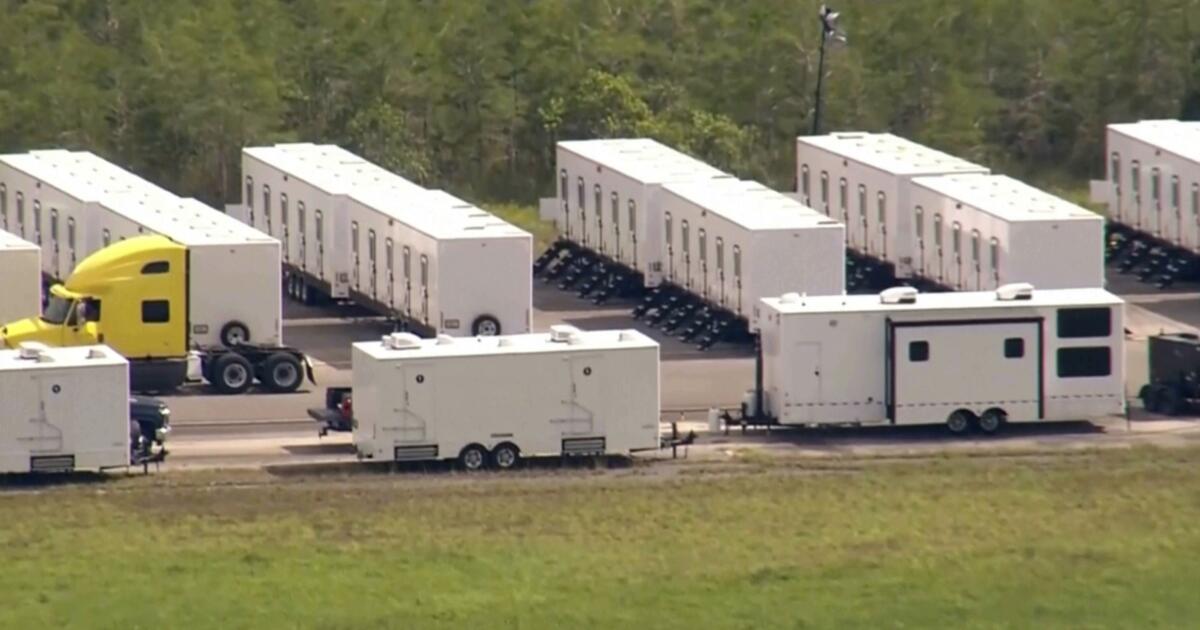Judge weighs detainees’ legal rights at Florida’s ‘Alligator Alcatraz’
MIAMI — A federal judge on Monday considered whether detainees at a temporary immigrant detention center in the Florida Everglades have been denied their legal rights.
In the second of two lawsuits challenging practices at the facility known as “Alligator Alcatraz,” civil rights attorneys sought a preliminary injunction to ensure that detainees at the site have confidential access to their lawyers, which they say hasn’t happened. Florida officials dispute that claim.
The civil rights attorneys also wanted U.S. District Judge Rodolfo Ruiz to identify an immigration court that has jurisdiction over the detention center so that petitions can be filed for the detainees’ bond or release. The attorneys say that hearings for their cases have been routinely canceled in federal Florida immigration courts by judges who say they don’t have jurisdiction over the detainees in the Everglades.
At the start of Monday’s hearing, government attorneys said they would designate the immigration court at the Krome North Service Processing Center in the Miami area as having jurisdiction over the detention center in the Everglades in an effort to address some of the civil rights attorneys’ constitutional concerns. The judge told the government attorneys that he didn’t expect them to change that designation without good reason.
But before delving into the core issues of the detainees’ rights, Ruiz wanted to hear about whether the lawsuit was filed in the proper jurisdiction in Miami. The state and federal government defendants have argued that even though the isolated airstrip where the facility was built is owned by Miami-Dade County, Florida’s Southern District is the wrong venue since the detention center is located in neighboring Collier County, which is in the state’s Middle District.
The hearing ended without the judge making an immediate ruling. Ruiz suggested that the case against the federal defendants might be appropriate for the Southern District, but the case against the state defendants might be better in the Middle District.
Court for the Southern District is held in Miami, Fort Lauderdale, Fort Pierce, Key West, and West Palm Beach, while Middle District courthouses are located in Tampa, Fernandina, Fort Myers, Jacksonville, Live Oak, Ocala, Orlando and St. Petersburg.
All parties have agreed that if the complaints against the state are moved to another venue, then the complaints against the federal government should be moved as well. It wasn’t immediately clear how Ruiz, a Trump appointee, handing the case off to another judge would affect the ultimate outcome of the case.
The hearing over legal access comes as another federal judge in Miami considers whether construction and operations at the facility should be halted indefinitely because federal environmental rules weren’t followed. U.S. District Judge Kathleen Williams on Aug. 7 ordered a 14-day halt to additional construction at the site while witnesses testified at a hearing that wrapped up last week. She has said she plans to issue a ruling before the order expires later this week.
Meanwhile, Gov. Ron DeSantis announced last week that his administration was preparing to open a second immigration detention facility dubbed “Deportation Depot” at a state prison in north Florida. DeSantis justified building the second detention center by saying President Trump’s administration needs the additional capacity to hold and deport more immigrants.
The state of Florida has disputed claims that “Alligator Alcatraz” detainees have been unable to meet with their attorneys. The state’s lawyers said that since July 15, when videoconferencing started at the facility, the state has granted every request for a detainee to meet with an attorney, and in-person meetings started July 28. The first detainees arrived at the beginning of July.
But the civil rights attorneys said that even if lawyers have been scheduled to meet with their clients at the detention center, it hasn’t been in private or confidential, and it is more restrictive than at other immigration detention facilities. They said scheduling delays and an unreasonable advance-notice requirement have hindered their ability to meet with the detainees, thereby violating their constitutional rights.
Civil rights attorneys said officers are going cell to cell to pressure detainees into signing voluntary removal orders before they’re allowed to consult their attorneys, and some detainees have been deported even though they didn’t have final removal orders. Along with the spread of a respiratory infection and rainwater flooding their tents, the circumstances have fueled a feeling of desperation among detainees, the attorneys wrote in a court filing.
The judge promised a quick decision.
Fischer and Schneider write for the Associated Press.
